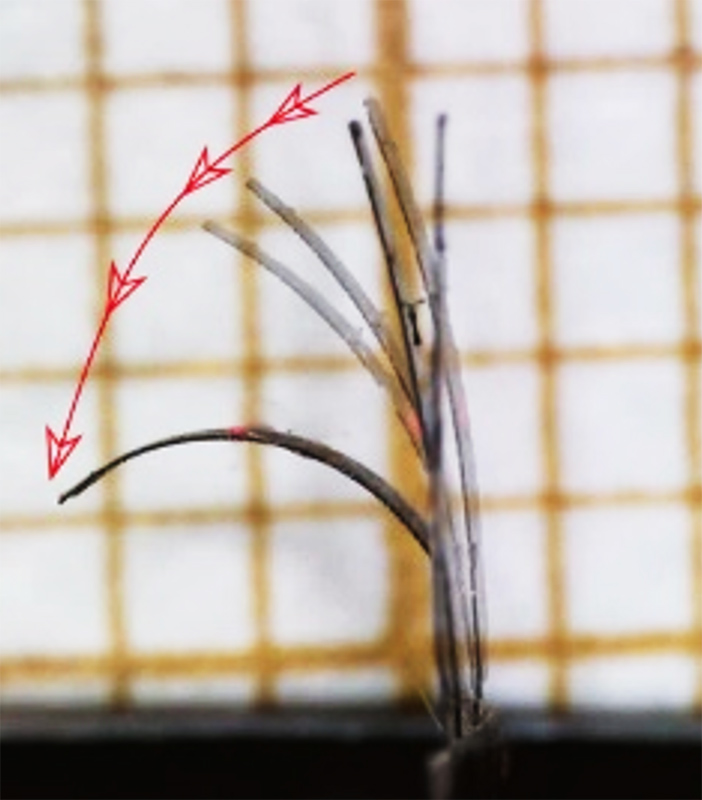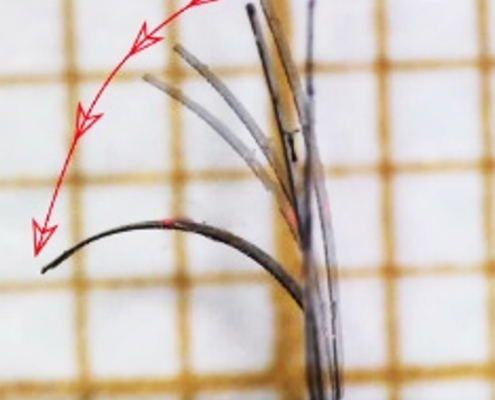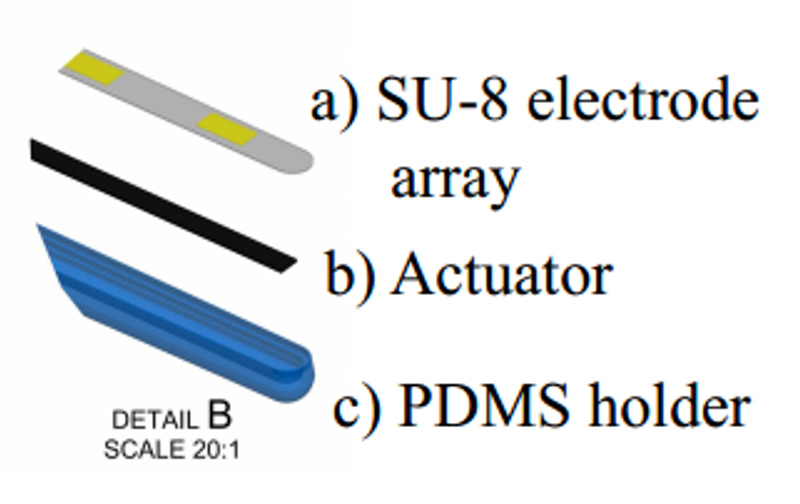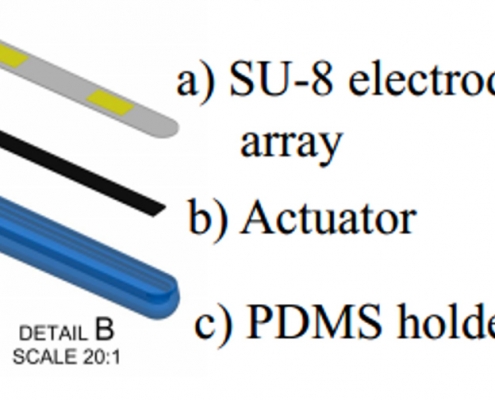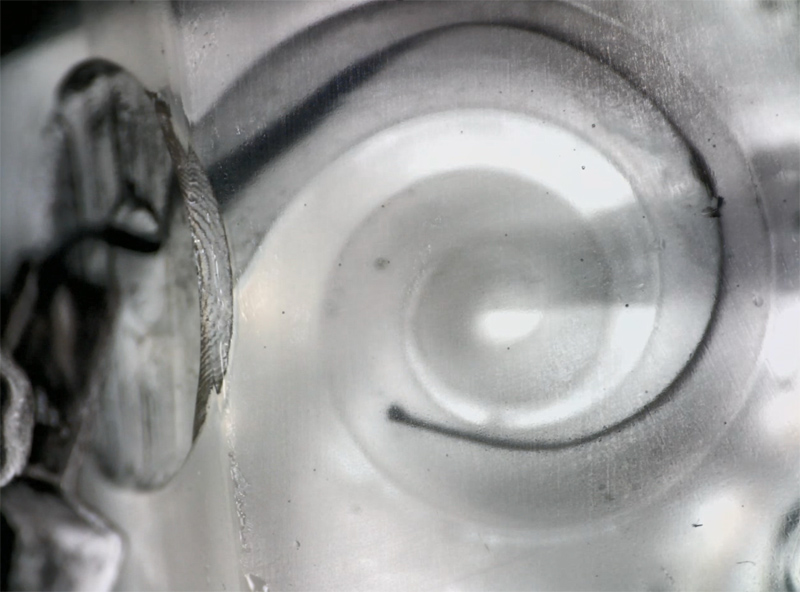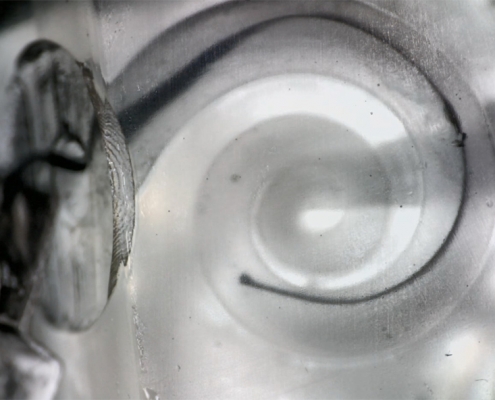Towards a robotic cochlear implant
Because of their ability to use ions found in body fluids [1] to operate, actuators/sensors based on conductive polymers have a major role to play in the medical field. In terms of performance, when actuated at electrical voltages of less than 2.5V, deformations of a few % of the material are obtained, leading to microbeam windings (20mmx0.5mmx0.03mm) as illustrated in figure 1.a., while the forces generated are just under one mN. In order to fully exploit the potential of these conductive polymers, the IEMN has developed a whole technology for integrating these materials into flexible structures to create flexible MEMS (microelectromechanical systems).
This technology is currently being used to robotize a cochlear implant in the ROBOCOP project [2]. The aim here is to meet a need of the surgeon, who has no perception of what is happening in the cochlea during manual insertion, and yet a failed or incomplete insertion can lead to poor post-operative hearing performance. The aim is therefore to facilitate implant insertion by minimizing friction between the implant and the outer wall of the cochlea, which takes the form of a spiral tube (Fig. 1.c). Several options are envisaged: the first is to regulate the actuation voltage so that the implant barely touches the cochlea walls as it advances; the second is to use the sensor mode of the conductive polymer to detect excessive friction, and then use the actuation property to tilt the implant towards the cochlea’s central axis. Since traditional stimulation electrodes are too rigid to be used as they stand, the IEMN has developed innovative flexible stimulation electrodes (Fig. 1.b) compatible with the forces generated by conductive polymer-based actuators. Insertion tests in false cochleas (Fig 1.d) are currently underway, and initial results are very promising[3].
https://hal.univ-lille.fr/IEMN/hal-03951435v1
Figures:
(a) Actuator response to electrical excitation,
(b) Configuration of the proposed implant prototype,
(c) Simulation of cochlear implant insertion to identify contact zones in the cochlea at different stages of the process,
(d) Actuator with a stimulation electrode in SU-8 actuator « on » near the inner wall of the cochlea.
Video to discover
Simulation of cochlear implant insertion to identify contact zones in the cochlea at different stages of the process – figure (c)
.
Video to discover
Actuator with a stimulation electrode in SU-8 actuator « on » near the inner wall of the cochlea – figure (d)
Références :
[1] L. Seurre et al., “Behavior of conducting polymer-based micro-actuators under a DC voltage,” Sensors and Actuators B: Chemical, vol. 380, p. 133338, Apr. 2023, doi: 10.1016/j.snb.2023.133338.
[2] Projet ROBOCOP : LPPI (CY Cergy Paris Université), Institut de l’audition, INRIA (Lille-Nord Europe), Oticon Medical. https://anr.fr/Projet-ANR-19-CE19-0026
[3] A. Itawi et al., « Smart Electrode Array for Cochlear Implants, » 2023 IEEE 36th International Conference on Micro Electro Mechanical Systems (MEMS), Munich, Germany, 2023, pp. 452-455, doi: 10.1109/MEMS49605.2023.10052348.
Contacts : Eric Cattan, Sofiane Ghenna, Sébastien Grondel et Caroline Soyer

